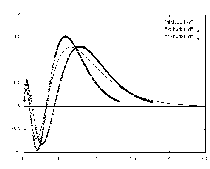 .....
.....
The aim is to be able to compare the wavefunctions produced by the Herman-Skillman code with the screened-Z hydrogen-like.
Here are the detailed instructions.
Here are simple pictures (click on them for proper size and explanations)
 .....
.....

The Herman-Skillman code originates from the period 1961-62. The history of the code you can read partly in the code itself, or in the book by the two authors, where also a detailed description is available.
The code has been written in the "old days" of computing, so there are not many comments explaining what is actually happening.
However, it is not our task to understand the coding in detail. We are going to use the code and obtain the wavefunctions, which we shall compare with some hydrogen-like wavefunctions with various Z-values.
The hydrogen-like wavefunctions are obtained by the code hydrad.f, which has been in fact produced by REDUCE(...... alternatively here), so that it is certainly correct.
The wavefunctions will be most easily compared by using gnuplot, because all the outputs are formatted to be readable by the gnuplot program. Here are the instructions.
Here is also the Makefile to produce the executable codes. See also the Instructions for Code compilation. Normally, you can simply run the precompiled code, so that the last mentioned files are really relevant for those who wish to modify the code for their own use.